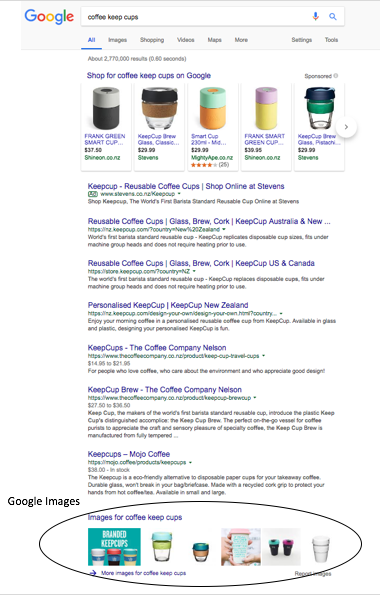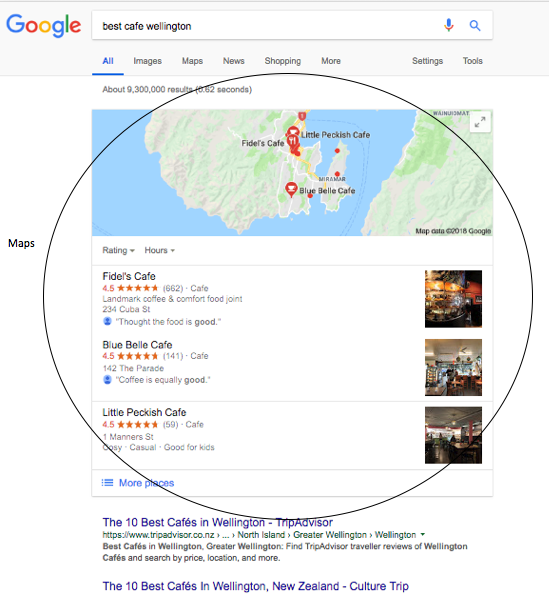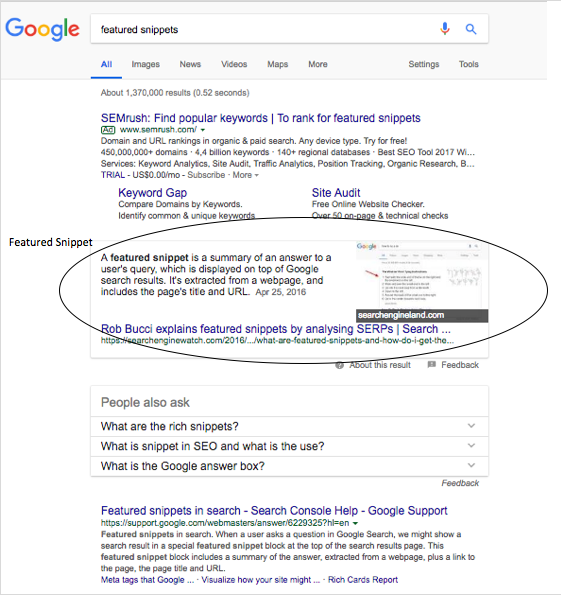
It has been said that the best place to hide a body is on Page 2 of Google, because 97% of people don’t go past page 1 of the search results (Google 2017). We have many clients ask us how to get onto the first page and are surprised that there are a number of ways, most of which are free!
Below we discuss 9 different ways to be on page one, 2 of which are paid and 7 are free;
1. Organic results – these appear on the first page of Google due to their relevance to the search terms. There are 10 organic spots on page 1. This relies on SEO (Search Engine Optimisation) which works by focusing on content creation, link building, meta-tag optimisation, keyword enhancement etc to boost your ranking and increase the volume of qualified traffic to your website. This is a long term strategy however; you will not see results instantly.
2. Search Advertising / Paid advertising (text ads) – also known as CPC (cost per click), SEM (Search Engine Marketing), or PPC (Pay Per Click). There are 7 paid spots on page 1. For Google, this is run through Google Adwords (referred to as Google Ads in 2020) where advertisers bid on certain keywords in order for their ads to appear in Google’s search results. They do not pay to have their ads seen, they only pay when someone clicks on their ad. Paid advertising is an “instant” way to get on page 1.
3. Shopping Ads (Paid) – Google shopping ads are similar to text ads but show a photo of your product, a title, price and store name. Like text ads, you do not pay to have your ad seen, only if someone clicks on it.

4. Google Images – Google often displays a range of images on page 1 that relate to the search term. For your image to appear it needs to be; relevant, good quality and optimize the alt tag, description, image file name and captions. Alt tags can not be seen but are used by search engine crawlers to help them index an image properly.

5. Knowledge Graph – also known as the Knowledge Panel, the Knowledge Graph appears to the right of the search results. Certain information in the Knowledge Graph can be edited in Google My Business, including opening hours, categories, website and contact details. Your Knowledge Graph can show against your brand but also against certain search terms. This is controlled by Google My Business.
6. People Also Ask – when someone asks a question in Google Search, there is often a “People Also Ask” section with questions that also relate to your search. This generally shows for the most general and often searched terms. Similarly to the Featured Snippet (#9), to be seen here relies on your content and your rank.

7. Maps – Google My Business manages your Google Maps presence (as well as your Google Knowledge Graph outlined above). To be seen on Google Maps, you need to verify your location and update your hours and information to ensure it is accurate. Once verified, whether or not your business shows on Google Maps relies on 3 factors
- Relevance – refers to how well a local listing matches what someone is searching for
- Distance – how far is each potential search result from the location term used in a search. If a user doesn’t specify a location in their search, Google will calculate distance based on what’s known about their location.
- Prominence – refers to how well-known a business is. Google review count and score are factored into local search ranking: more reviews and positive ratings will probably improve a business’s local ranking. Your position in web results is also a factor, so SEO best practices also apply to local search optimisation.
8. YouTube Video Results – Google often shows YouTube video results on page 1. To be seen, your video content on YouTube needs to be optimized – the video title, video description and video tags.

9. Featured Snippet – when someone asks a question in Google Search, there is sometimes a special “featured snippet” block at the top of the search results page, (just below the ads) that includes a summary of the answer (that has been extracted from a web page) plus a link to the page, page title and URL. The majority of featured snippets already rank on the first page of Google (the top 10 organic results) and require your website content to be an expert in your niche.



